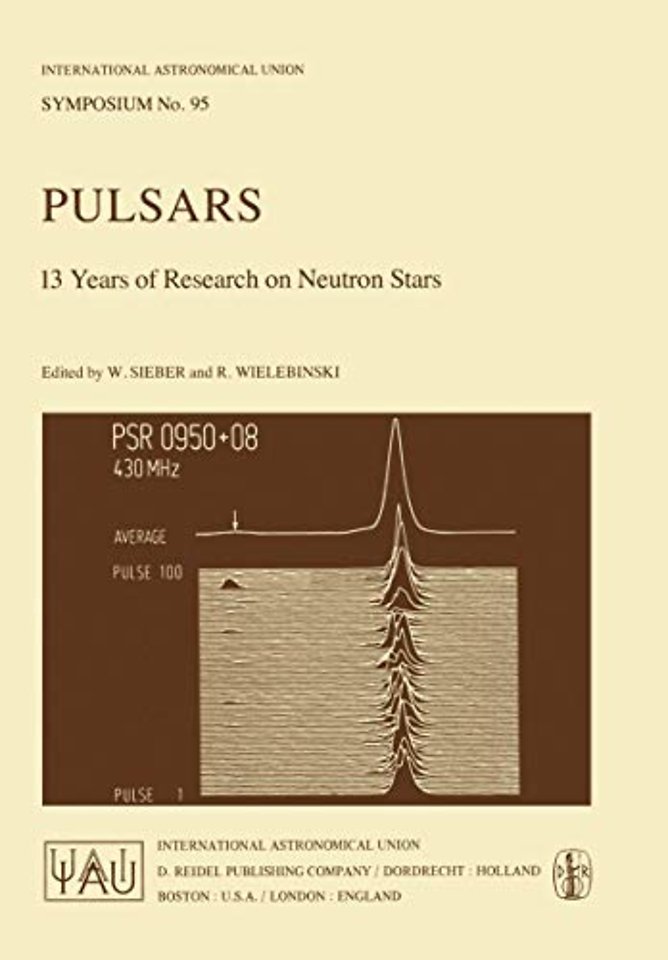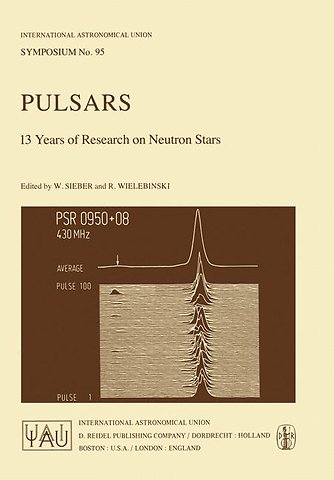Introductory Review.- Introductory Review.- I. Electrodynamics of the Pulsar Magnetosphere and Wave Zone.- Structure of the Pulsar Magnetosphere.- The Axially Symmetric Wind Magnetosphere.- A New Formulation of the Equations Governing the Pulsar Magnetosphere.- The Electric Fields in Nonneutral Beam Models of Pulsar Magnetospheres.- Pulsar Electrodynamics.- e+e- Annihilation in Strong Magnetic Fields.- Plasma Distribution Near Pulsars.- Electric Field Near a Rotating Neutron Star.- Hot Relativistic Winds and the Crab Nebula.- Propagation of Large Amplitude Pulsar Waves.- Pulsar Winds.- II. Radio Emission Mechanism.- The Slot Gap Model of Pulsars.- Evolution and Radiation in Pulsar Polar Cap Models.- Observational Consequences of Polar Cap Theories.- The Pulsar Magnetic Window.- The Location, Spectrum and Beamwidth of Pulsar Radiation from Polar Cap Models.- Pulsar Radio Emission and Bunching Mechanisms.- Radio Observational Constraints on Pulsar Emission Mechanisms.- Maser Pulse Emission Mechanisms.- Pulse Emission from the Light Cylinder.- Pulsar Electrodynamics: Production of Fast Particles.- Panel Discussion:.- From whence the Pulses.- III. Radio Observations of Pulsars.- Pulsar Polarization.- Multifrequency Polarization Observations of Integrated Pulse Profiles.- Polar Cap Relief and Integrated Pulse Structure.- Multi Radio Frequency Observations of Pulsars.- Simultaneous Multi-Frequency Pulsar Observations.- Microstructure Crosscorrelation in Pulses Simultaneously Observed at Frequencies Separated by up to 1 GHz.- Time Asymmetries in Pulsar Signals.- Pulsar Microstructure Quasi-Periodicity.- Pulsar Astrometry.- The Radio Interpulse from PSR 0950+08.- PSR 0031-07: The Harmonic Pulsar.- Mode-Changing, Drifting Subpulses, and Interpulse Emission in PSR 1822-09.- SomeCharacteristics of Pulsars with Long Pulse Nulling.- Radio Radiation Characteristics of Pulsars and Magnetic Dipole Angle.- IV. Optical Radiation.- Optical Observations of Pulsars.- Pulsar Optical Emission as Amplified Synchrotron Emission.- V. X-Ray and ?-Ray Emission.- X-ray and Gamma-ray Observations of Pulsars.- High Energy Gamma Rays from Pulsars.- On X-ray Pulsar Radiation Mechanisms.- Pulsar Magnetic Field: Spectral Formation in Her X-1.- VI. Pulse Timing.- Radio Timing Observations.- Macroscopic and Microscopic Behavior Following Four Large Jumps in the Vela Pulsar (PSR 0833-45).- Pulse Timing and Neutron Star Structure.- Glitches, Timing Noise, and Pulsar Thermometry.- Pulsar Glitches: Superfluid Unpinning.- VII. Properties of Neutron Stars.- Neutron Star Properties from Observations of Pulsars and Pulsing X-ray Sources.- Neutron Star Models.- Thermal Properties of Neutron Stars.- Cooling of Neutron Stars: Accurate Treatment of Thermal Conduction.- Unpulsed X-rays from Pulsars.- VIII. Neutron Stars in Binary Systems.- Masses of Neutron Stars in X-ray Binary Systems.- The Magnetic Fields and Original Spins of Binary and Runaway Pulsars.- Binary Pulsars.- Interpretation of Binary Pulsar Observations.- Evolution of Close Binaries and the Formation of Pulsars.- IX. Pulsars and Supernovae.- Asymmetric Supernova Explosions: The Origin of Runaway Pulsars and Binary Pulsars.- Supernovae — Birthplace of Pulsars?.- Pulsar Activity and Supernova Remnant Morphology.- X. Galactic Distribution of Pulsars.- The Galactic Distribution of Pulsars.- Galactic Distribution and Genesis of Pulsars.- Asymmetries in the Galactic Distribution of Pulsars.- New Observations of HI Absorption for Pulsars.- Concluding Review.- Concluding Review.- Other Papers Presented at the Conference.-Name Index.

